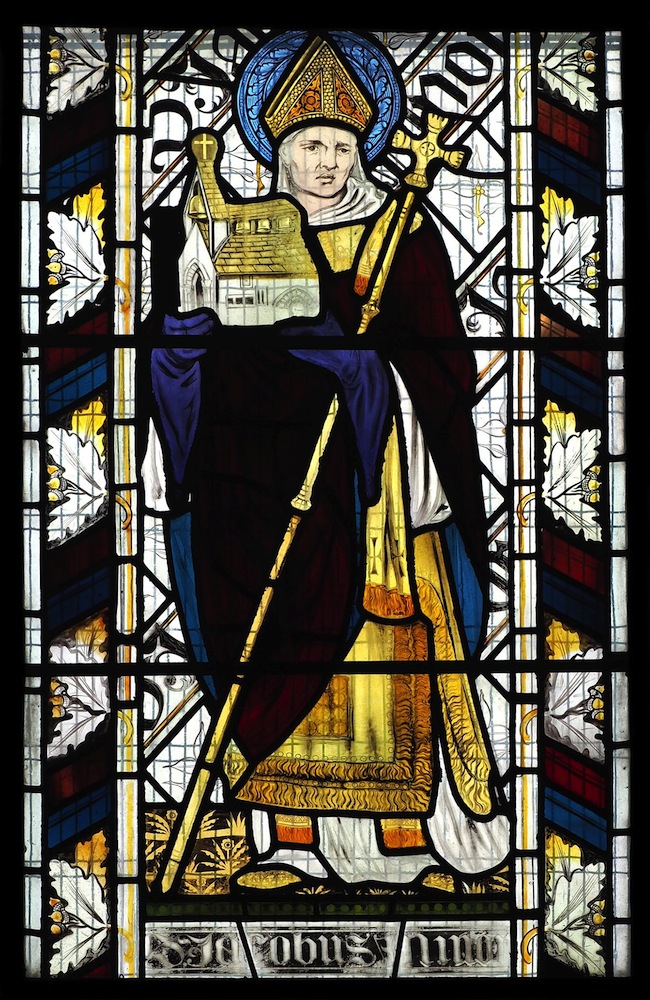

On the far left is Elijah (or Elias, another form of the name), by William Morris himself, apparently designed for this window — the key gives no details of an earlier design. Next on the left is Edward Burne-Jones's St Stephen, originally designed for Bradford in 1864, the large stone at his head reminding us of the savagery of his martyrdom.



In the middle of this row (though first on the left above) is Morris's St Peter, designed for Middleton in 1865, a "vigorous, bearded" figure felt to bear a "distinct resemblance" to Morris himself (Garrett 117). St Peter is followed by another of Burne-Jones's figures, the beardless St James the Less (or younger), originally designed for Southgate in 1865. He holds a model of a church, presumably in acknowledgement of his role in opening the early church to all who wished to come. On the far right of the row, John the Baptist, by William Morris, again with no information about an earlier design like this.
Photographs taken and kindly sent in by Adrian Powter, who retains the copyright. Text and formatting by Jacqueline Banerjee. [Click on the images to enlarge them.]
Related Material
- All Saints, Jesus Lane, Cambridge (the church itself)
- East Window (1): Whole window, "Christ Enthroned" by Burne-Jones, and tracery lights
- East Window (2): Top row — Adam, Abraham and Isaac, Noah and Eve (Adam and Eve by Burne-Jones, Isaac and Noah by Brown)
- East Window (3): Upper middle row — Melchisedec, St Louis of France, David, St Edward and Judas Maccabaeus (all by Burne-Jones, except St Louis, by Brown)
- East Window (5): Lowest row — St Barbara, St Agnes St Radegund, St Dorothy and St Catherine (all by Burne-Jones, except St Catherine, by Morris
Bibliography
"All Saints Church." Historic England. Web. 4 April 2018.
Garrett, Martin. Cambridge: A Cultural and Literary History. Oxford: Signal Books, 2004.
Jenkins, Simon. England's Thousand Best Churches. Rev. ed. London: Penguin, 2009.
Key provided in the church itself.
Tricker, Roy, and others. All Saints Church. London: Churches Conservation Trust, 2004 (like the key, kindly supplied by Adrian Powter).
Created 4 April 2018